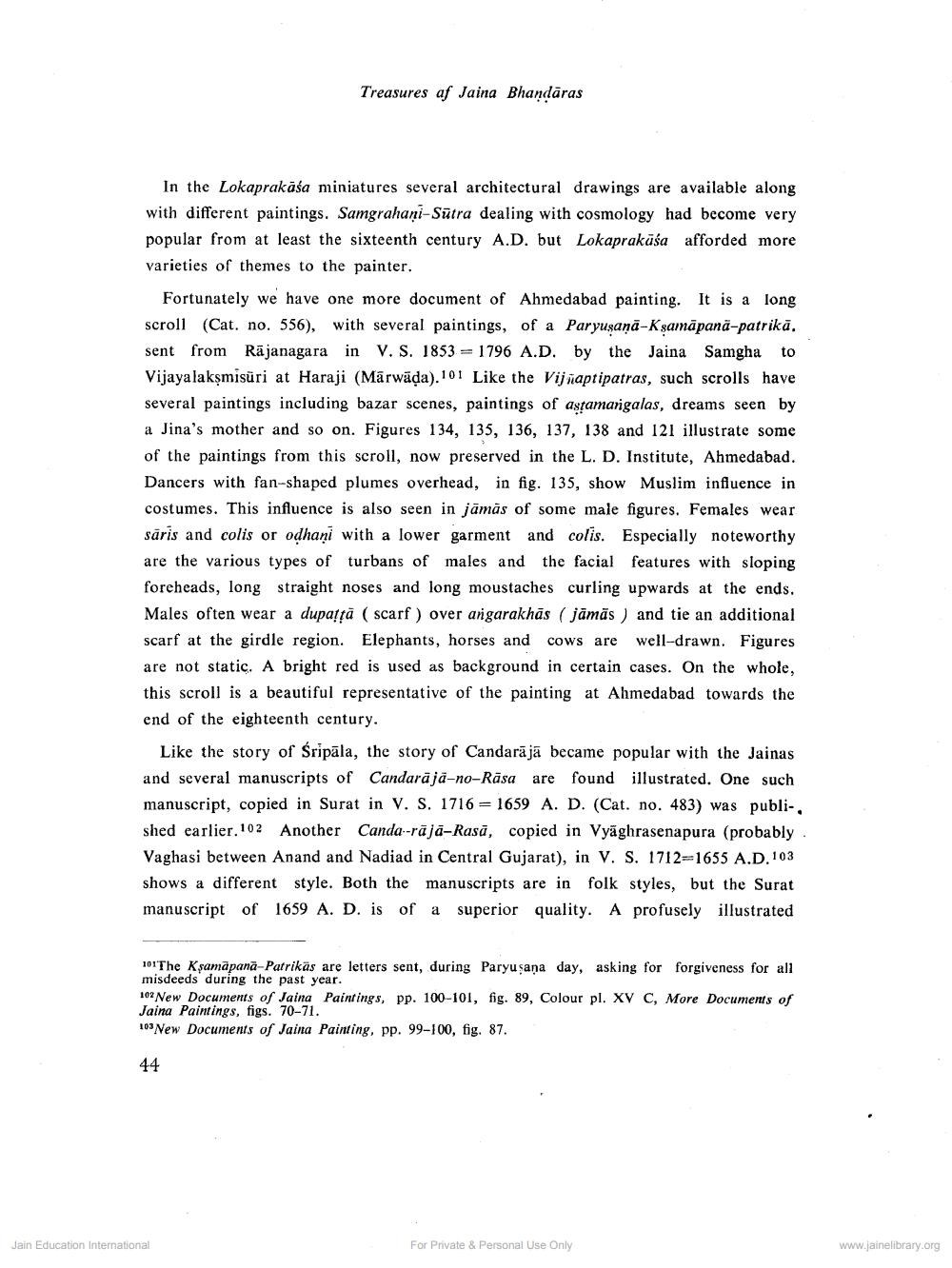________________
Treasures af Jaina Bhandāras
In the Lokaprakāśa miniatures several architectural drawings are available along with different paintings. Samgrahaņi-Sūtra dealing with cosmology had become very popular from at least the sixteenth century A.D. but Lokaprakāśa afforded more varieties of themes to the painter.
Fortunately we have one more document of Ahmedabad painting. It is a long scroll (Cat. no. 556), with several paintings, of a Paryuşanā-K şamāpanā-patrikā. sent from Rājanagara in V. S. 1853 = 1796 A.D. by the Jaina Samgha to Vijayalakṣmisūri at Haraji (Mārwāda).101 Like the Vijnaptipatras, such scrolls have several paintings including bazar scenes, paintings of astamarigalas, dreams seen by a Jina's mother and so on. Figures 134, 135, 136, 137, 138 and 121 illustrate some of the paintings from this scroll, now preserved in the L. D. Institute, Ahmedabad. Dancers with fan-shaped plumes overhead, in fig. 135, show Muslim influence in costumes. This influence is also seen in jāmās of some male figures. Females wear sāris and colis or odhani with a lower garment and colis. Especially noteworthy are the various types of turbans of males and the facial features with sloping foreheads, long straight noses and long moustaches curling upwards at the ends. Males often wear a dupatță ( scarf ) over angarakhās (jāmās) and tie an additional scarf at the girdle region. Elephants, horses and cows are well-drawn. Figures are not static. A bright red is used as background in certain cases. On the whole, this scroll is a beautiful representative of the painting at Ahmedabad towards the end of the eighteenth century.
Like the story of Sripāla, the story of Candarājā became popular with the Jainas and several manuscripts of Candarājā-no-Rāsa are found illustrated. One such manuscript, copied in Surat in V. S. 1716 = 1659 A. D. (Cat. no. 483) was publi-. shed earlier. 102 Another Canda--rājā-Rasă, copied in Vyāghrasenapura (probably Vaghasi between Anand and Nadiad in Central Gujarat), in V. S. 1712=1655 A.D. 103 shows a different style. Both the manuscripts are in folk styles, but the Surat manuscript of 1659 A. D. is of a superior quality. A profusely illustrated
101The Kşamāpanā-Patrikäs are letters sent, during Paryu şaņa day, asking for forgiveness for all misdeeds during the past year. 102 New Documents of Jaina Paintings, pp. 100-101, fig. 89, Colour pl. XV C, More Documents of Jaina Paintings, figs. 70-71. 103New Documents of Jaina Painting, pp. 99-100, fig. 87.
44
Jain Education International
For Private & Personal Use Only
www.jainelibrary.org




